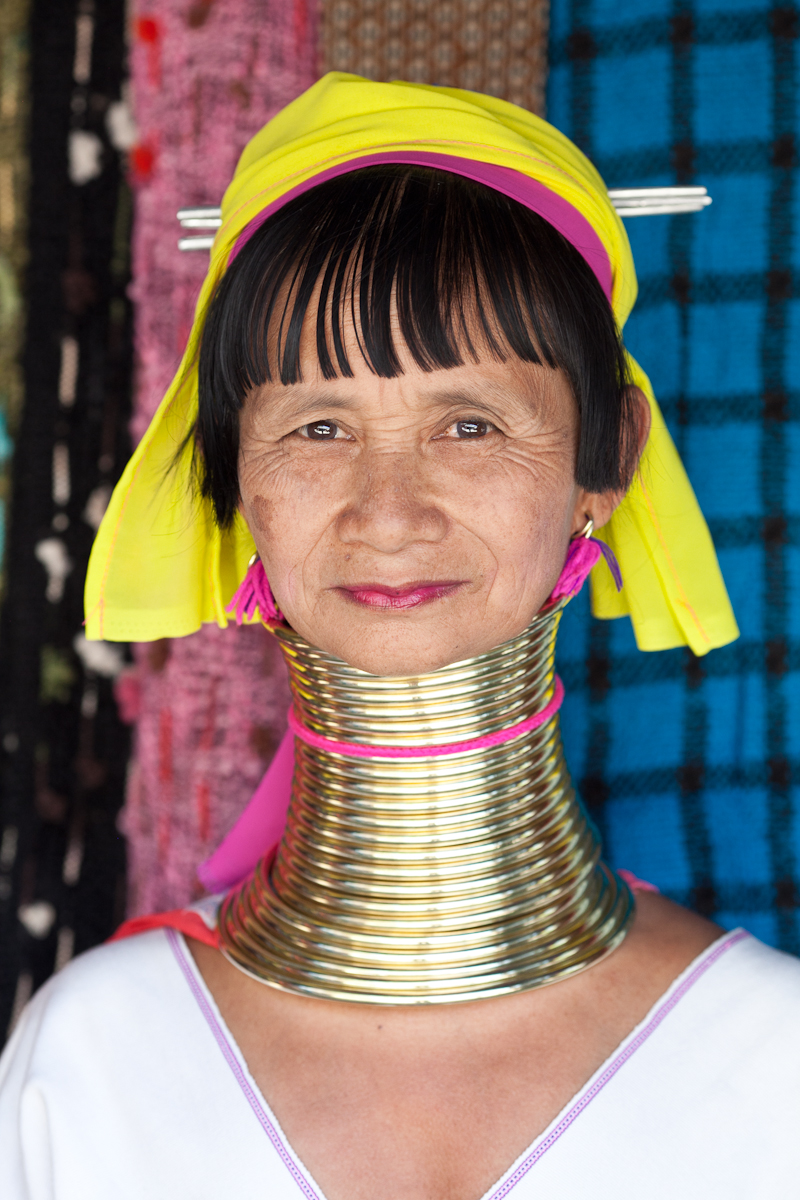
The Kayan are a subgroup of the Red Karen (Karenni) people, a Tibeto-Burman ethnic minority of Burma (Myanmar).Women of the Kayan tribes identify themselves by their forms of dress. Women of the Kayan Lahwi tribe are well known for wearing neck rings, brass coils that are placed around the neck, appearing to lengthen it. The women wearing these coils are known as "giraffe women" to tourists.

Girls first start to wear rings when they are around five years old.Over the years the coil is replaced by a longer one and more turns are added. The weight of the brass pushes the collarbone down and compresses the rib cage. The neck itself is not lengthened; the appearance of a stretched neck is created by the deformation of the clavicle.
Many ideas regarding why the coils are worn have been suggested, often formed by visiting anthropologists, who have hypothesized that the rings protected women from becoming slaves by making them less attractive to other tribes. Contrastingly it has been theorised that the coils originate from the desire to look more attractive by exaggerating sexual dimorphism, as women have more slender necks than men. It has also been suggested that the coils give the women resemblance to a dragon, an important figure in Kayan folklore. The coils might be meant to protect from tiger bites, perhaps literally, but probably symbolically.
The coil, once on, is seldom removed, as the coiling and uncoiling is a lengthy procedure. It is usually only removed to be replaced by a new or longer coil. The muscles covered by the coil become weakened. Many women have removed the rings for medical examinations. Most women prefer to wear the rings once their clavicle has been lowered, as the area of the neck and collarbone often becomes bruised and discolored. Additionally, the collar feels like an integral part of the body after ten or more years of continuous wear.
In 2006 some of the younger women in Mae Hong Son started to remove their rings, either to give them the opportunity to continue their education or in protest against the exploitation of their culture and the restrictions that came with it.The government of Burma began discouraging neck rings as it struggled to appear more modern to the developed world.

The Southern Ndebele people are another tribe that also have the culture of wearing neck rings. In earlier times, the Ndebele wife would wear copper and brass rings around her arms, legs and neck, symbolising her bond and faithfulness to her husband, once her home was built. She would only remove the rings after his death. The rings (called idzila) were believed to have strong ritual powers. Husbands used to provide their wives with rings; the richer the husband, the more rings the wife would wear. Today, it is no longer common practice to wear these rings permanently.


No comments :
Post a Comment